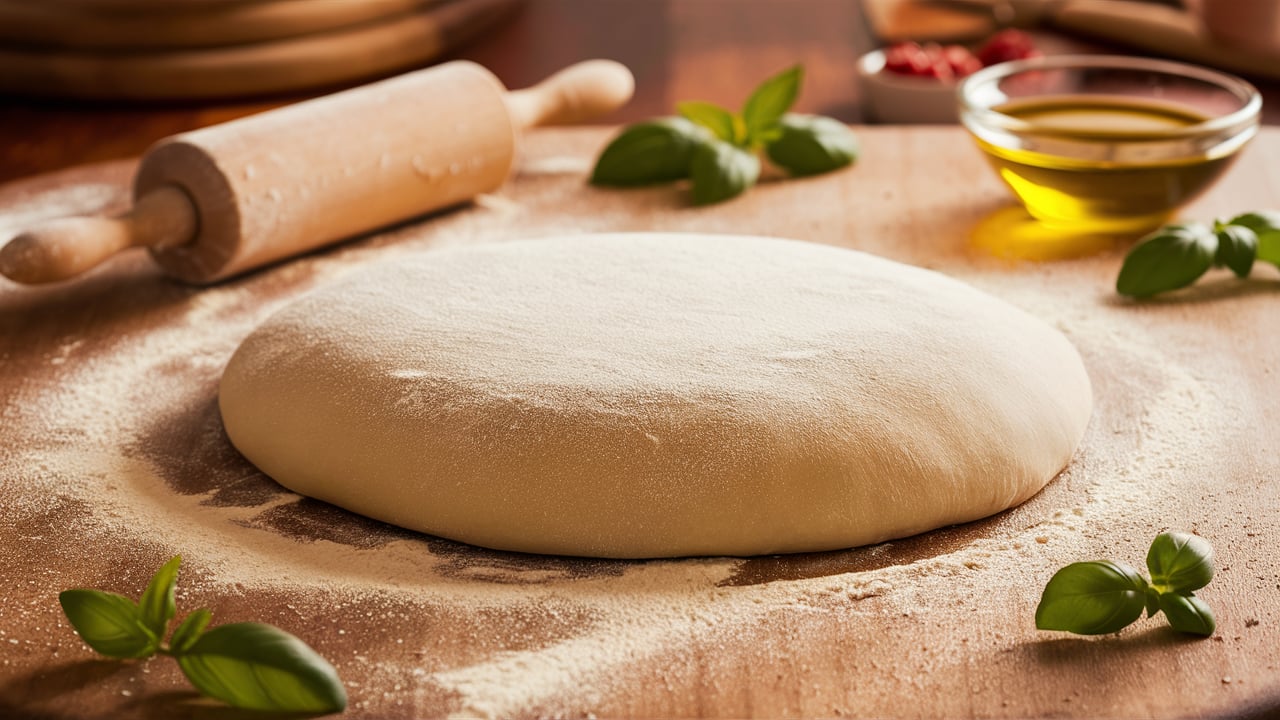The Fascinating History of Pizza: From Ancient Origins to Global Fame

From the bustling streets of Naples to the towering skyscrapers of New York City, pizza has captured the hearts and taste buds of people around the world. This beloved dish, with its perfect blend of crispy crust, savory sauce, and melted cheese, has evolved from a humble street food to a global culinary phenomenon. Today, you can find pizza in every corner of the world, from Michelin-starred restaurants to local mom-and-pop pizzerias. But how did this simple flatbread become one of the most popular foods on the planet? Join us as we embark on a mouthwatering journey through time, exploring the rich and diverse history of pizza from its ancient origins to its modern-day varieties.
Ancient Origins of Flatbreads
The story of pizza begins long before the invention of the wheel, in the cradle of civilization itself. Flatbreads, the ancestors of modern pizza, have been a staple food in many ancient cultures for thousands of years.
Egyptians: The Sun-Baked Pioneers
The ancient Egyptians were among the first to develop the art of breadmaking. They discovered that wild yeast from the air could be captured to leaven dough, creating a lighter, more palatable bread. These early flatbreads were often baked in the sun, taking advantage of Egypt’s hot climate.
Greeks: A Love Affair with Topped Flatbreads
The ancient Greeks took flatbreads to the next level by adding toppings. They created a dish called plakous, a flatbread flavored with herbs, onions, and garlic. This early version of topped flatbread would later influence Italian cuisine and contribute to the development of pizza.
Romans: Baking on the Battlefield
Roman soldiers, known for their ingenuity, developed a portable method of making flatbread during their campaigns. They would mix flour, water, and salt to create a simple dough, which they then baked on their shields over an open fire. Sometimes, they would add cheese, olive oil, or dates to create a more flavorful meal. This early version of “shield pizza” might be considered the world’s first mobile pizzeria!
The Birth of Pizza in Naples
While flatbreads with toppings had existed for centuries, the modern concept of pizza as we know it today began to take shape in Naples, Italy, during the 18th century.
Naples: A Melting Pot of Flavors
Naples, a bustling port city, was home to a large working-class population who needed quick, affordable food. The city’s diverse inhabitants, including sailors, traders, and immigrants, brought with them a variety of culinary influences. It was in this vibrant, multicultural environment that pizza was born.
The Tomato Revolution
The introduction of tomatoes from the New World in the 16th century played a crucial role in the development of pizza. Initially, Europeans believed tomatoes to be poisonous, but by the late 18th century, the poor of Naples had discovered that these red fruits were not only safe to eat but delicious. Tomatoes quickly became a popular topping for the flatbreads sold by street vendors, adding flavor and nutrition to the simple dish.
Pizza as Street Food
In Naples, pizza began as a street food, sold from open-air stands and out of large, circular tin drums with false bottoms that were packed with charcoals to keep the pizzas warm. These early pizzas were simple affairs, often topped with just tomatoes, garlic, oregano, and a bit of cheese. The affordability and convenience of pizza made it a hit among the working class, who could easily grab a slice on their way to work.
Pizza Margherita: The Royal Seal of Approval
One of the most famous stories in pizza history involves royalty, patriotism, and a clever pizzaiolo named Raffaele Esposito. This tale not only elevated pizza’s status but also gave birth to one of the most iconic pizzas of all time.
Queen Margherita’s Visit to Naples (1889)
In 1889, King Umberto I and Queen Margherita of Italy visited Naples. The story goes that the queen, having heard about this popular street food, requested to try pizza despite the disapproval of the royal court, who considered it peasant food.
Chef Raffaele Esposito’s Culinary Tribute
Raffaele Esposito, a renowned pizzaiolo of the time, was called upon to prepare pizza for the royal couple. In a stroke of culinary genius and patriotism, Esposito created three different pizzas for the queen. The one that won her approval was a pizza garnished with tomatoes, mozzarella cheese, and fresh basil, ingredients that mimicked the colors of the Italian flag: red, white, and green.
The Birth of Pizza Margherita
Impressed by its flavor and charmed by its patriotic appearance, Queen Margherita gave her seal of approval to this pizza. In her honor, Esposito named this creation “Pizza Margherita.” This royal endorsement helped transform pizza from a local street food to a source of national pride, paving the way for its eventual global popularity.
Pizza’s Journey to America
As Italian immigrants began to settle in the United States in the late 19th and early 20th centuries, they brought with them their love for pizza, setting the stage for a culinary revolution.
Italian Immigrants and the Birth of American Pizzerias
Italian immigrants, particularly those from Naples and southern Italy, began to open pizzerias in their new American neighborhoods. Cities like New York, Chicago, and Philadelphia became early hotspots for pizza in America. These immigrants adapted their recipes to local tastes and available ingredients, laying the foundation for distinctly American pizza styles.
Lombardi’s: America’s First Pizzeria
In 1905, Gennaro Lombardi opened the first licensed pizzeria in the United States. Located on Spring Street in New York City’s Little Italy, Lombardi’s quickly became a neighborhood institution. The pizzeria introduced New Yorkers to the Neapolitan-style pizza and sparked a pizza revolution that would soon spread across the country.
Post-World War II Pizza Boom
The popularity of pizza in America skyrocketed after World War II. Many American soldiers who had been stationed in Italy returned home with a taste for the dish. This newfound demand, coupled with the post-war economic boom, led to a rapid expansion of pizzerias across the United States. Pizza transformed from an ethnic cuisine to a mainstream American food.
Regional Pizza Styles in the U.S.
As pizza spread across America, different regions developed their own unique styles, reflecting local tastes and culinary traditions.
New York-Style Pizza
Characteristics:
- Large, thin crust that’s crispy yet pliable
- Sold by the slice, perfect for eating on the go
- Traditional toppings include tomato sauce and mozzarella cheese
- Often folded in half to eat
New York-style pizza, with its large, foldable slices, became an iconic part of the city’s culinary landscape. The style is said to have originated from Lombardi’s, adapting the Neapolitan pizza to suit American tastes and the need for a quick, portable meal in the bustling city.
Chicago Deep-Dish Pizza
Characteristics:
- Thick, high-edged crust forming a deep “dish”
- Layered with cheese, meat, and vegetables
- Topped with chunky tomato sauce
- Requires a knife and fork to eat
Invented at Pizzeria Uno in 1943 by Ike Sewell and Ric Riccardo, Chicago deep-dish pizza was a response to the demand for a more substantial meal. Its unique construction and hearty nature reflected the city’s working-class roots and cold climate.
Detroit-Style Pizza
Characteristics:
- Rectangular shape
- Thick, crispy crust with a chewy interior
- Cheese spread to the edges, creating a caramelized crust
- Sauce is often placed on top of the other ingredients
Detroit-style pizza originated in the 1940s at Buddy’s Rendezvous (now Buddy’s Pizza). Its distinctive shape comes from being baked in industrial parts trays, a nod to the city’s automotive heritage.
California Pizza
Characteristics:
- Thin crust
- Non-traditional, often gourmet toppings
- Emphasis on fresh, local ingredients
California pizza emerged in the 1980s, pioneered by chefs like Ed LaDou and Wolfgang Puck. It reflected California’s culinary innovation and access to fresh, diverse ingredients. Toppings might include anything from BBQ chicken to goat cheese and arugula.
Pizza Goes Global
In the latter half of the 20th century, pizza transcended its Italian and American roots to become a truly global phenomenon.
Pizza’s International Adaptations
As pizza spread around the world, it was adapted to suit local tastes and ingredients:
- Japan: Pizzas topped with eel, squid ink, or Camembert cheese
- India: Pizzas featuring tandoori chicken or paneer tikka
- Brazil: Pizzas with green peas or quail eggs
- Australia: Pizzas topped with kangaroo meat or barbecue sauce
These local adaptations demonstrate pizza’s versatility and universal appeal.
Global Pizza Chains
The rise of international pizza chains like Pizza Hut, Domino’s, and Papa John’s played a significant role in globalizing pizza. These companies expanded aggressively into international markets, often adapting their menus to local tastes. For example:
- In India, Pizza Hut offers a “Tandoori Paneer” pizza
- In Japan, Domino’s has featured a “Fish and Chip” pizza
- In Saudi Arabia, Papa John’s provides a “Chicken Tikka” pizza
While purists might argue about authenticity, these adaptations have helped make pizza a truly global food.
The Art of Neapolitan Pizza
While pizza was conquering the world, Naples worked to preserve the authenticity of its original creation.
Associazione Verace Pizza Napoletana (AVPN)
Founded in 1984, the AVPN set out to protect and promote authentic Neapolitan pizza. The organization established strict guidelines for making “true” Neapolitan pizza, including:
- Use of specific types of tomatoes and mozzarella
- Dough made only with flour, natural yeast, salt, and water
- Hand-kneading of the dough (no mechanical preparation)
- Cooking in a wood-fired dome oven at 430-480°C (800-900°F)
- Cooking time not to exceed 90 seconds
UNESCO Recognition
In 2017, the art of Neapolitan pizza-making was added to UNESCO’s list of Intangible Cultural Heritage. This recognition highlighted the cultural significance of pizza and the skill involved in traditional pizza-making methods.
The Modern Pizza Renaissance
In recent years, there has been a renewed interest in artisanal and gourmet pizzas, blending traditional techniques with modern culinary innovation.
Farm-to-Table Pizza
Many pizzerias now focus on sourcing high-quality, local ingredients. This approach not only results in fresher, more flavorful pizzas but also supports local agriculture and reduces environmental impact.
Creative Toppings and Crusts
Innovation in pizza-making continues, with chefs experimenting with:
- Alternative flours (e.g., spelt, kamut)
- Gluten-free and cauliflower crusts
- Unusual toppings like truffles, edible flowers, or even gold leaf
- Vegan cheeses and plant-based meat alternatives
The Future of Pizza
As we look to the future, pizza continues to evolve and adapt to changing tastes and technologies.
Plant-Based Pizzas
With the rise of veganism and plant-based diets, many pizzerias are offering more vegetarian and vegan options. Plant-based cheese alternatives and meat substitutes are becoming increasingly common on pizza menus.
Sustainable Pizza-Making
Sustainability is becoming a key focus, with pizzerias looking at:
- Sourcing ingredients locally and seasonally
- Using eco-friendly packaging
- Implementing energy-efficient ovens and practices
Technology and Pizza
Technology is also shaping the future of pizza:
- Online ordering and delivery apps have transformed how we order pizza
- Some companies are experimenting with pizza delivery by drone or robot
- Automated pizza-making machines are being developed for quick, consistent production
Conclusion
From its humble beginnings as a flatbread in ancient civilizations to its status as a global culinary icon, pizza has come a long way. Its journey reflects the story of human migration, cultural exchange, and culinary innovation. Whether you prefer a classic Margherita from Naples, a hefty slice of Chicago deep-dish, or an avant-garde creation topped with locally-sourced ingredients, there’s a pizza out there for everyone. As we look to the future, one thing is certain: pizza will continue to evolve, adapt, and bring people together, one slice at a time.
FAQ Section
Q: When was pizza invented?
A: While flatbreads with toppings have existed for thousands of years, the modern pizza as we know it today originated in Naples, Italy, in the late 18th century.
Q: What is the difference between Neapolitan pizza and other types?
A: Neapolitan pizza is characterized by its thin center and puffy, charred crust. It’s made with specific ingredients (San Marzano tomatoes, buffalo mozzarella) and cooked quickly at very high temperatures in a wood-fired oven. Other types of pizza may have different crust thicknesses, toppings, and cooking methods.
Q: Why is pizza so popular worldwide?
A: Pizza’s popularity can be attributed to its versatility, affordability, and the ease with which it can be adapted to local tastes. It’s also a convenient food that can be eaten on-the-go or shared communally, making it suitable for various dining occasions.
Q: What is the most popular pizza topping?
A: While preferences vary by region, pepperoni is consistently ranked as the most popular pizza topping in the United States. Globally, other popular toppings include mushrooms, extra cheese, sausage, and onions.


